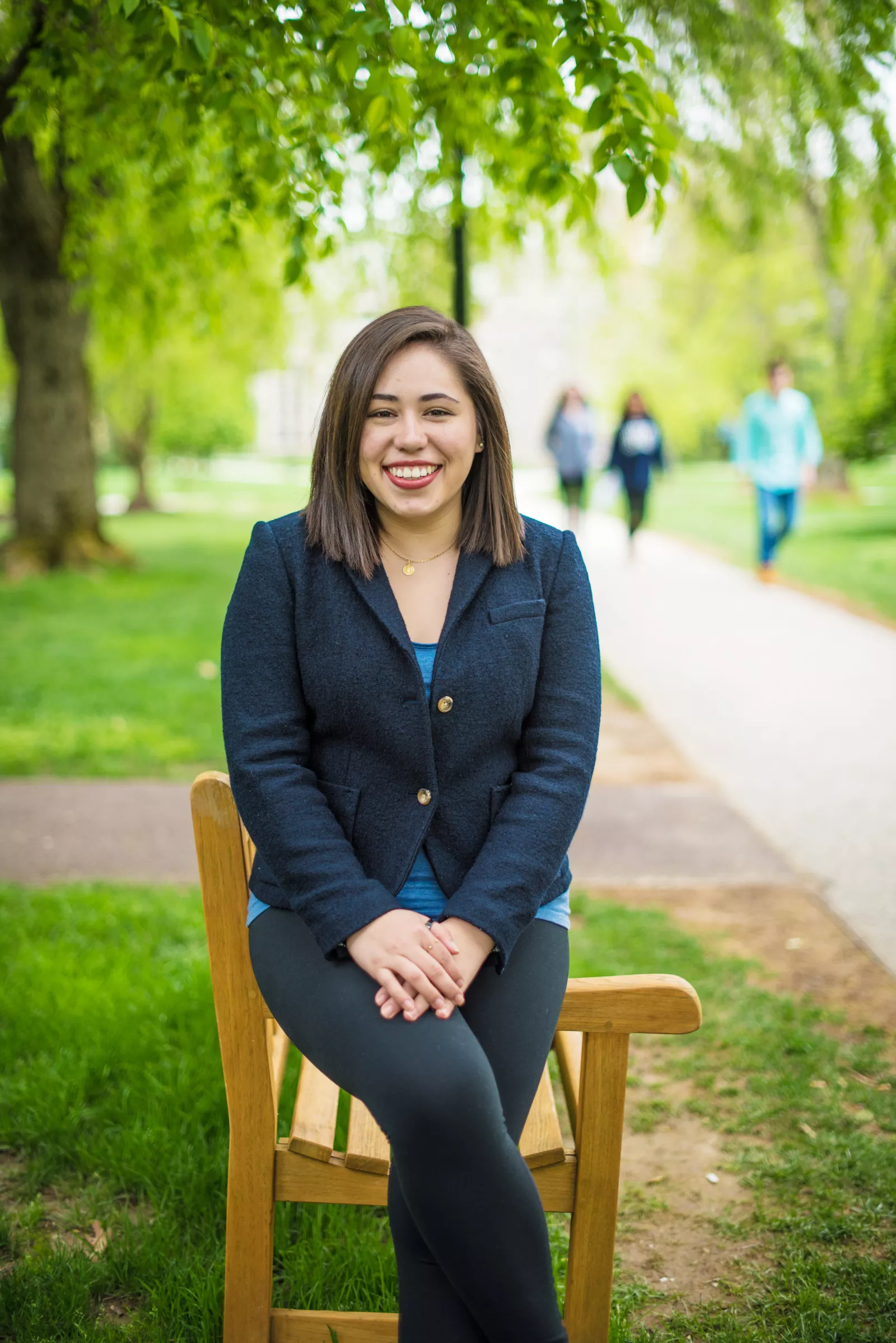Are there cognitive advantages to being bilingual? Evelyn Aviles ’17 finds out while writing her psychology thesis.
Fluent in both English and Spanish, Evelyn was drawn to the possibility of researching language. Then, when she realized she would be working under Professor of Psychology Anjali Thapar who specializes in cognitive research, Evelyn decided to pursue the effect of language on cognition. Specifically, she will look into the effect on executive functioning skills, which include everything from working memory and emotional control to the ability to multitask.
Evelyn quickly noticed a problem when she conducted her literature review of previous studies in this realm. Half of the research was telling her one thing, while the other half was telling her another.
“There was a lot of conflicting information that suggested either one of two things: Being bilingual is associated with a significantly positive effect of performance on executive functioning tasks in comparison with monolingual individuals or that being bilingual was not associated with any significant difference from monolingual performance on these tasks,” she says. “Clearly two conflicting conclusions.”
Evelyn hopes her research will offer a better understanding of the effect of language on cognition.
“Our overall goal is to hopefully see that bilingualism results in better performance on executive functioning tasks in comparison to monolinguals, in this case for college-aged individuals,” she says.
With the help of Professor Thapar, Evelyn has gathered background research and put together an experimental paradigm, which includes a few cognitive performance tasks, verbal and non-verbal reasoning tasks, a measure of motivation, and a measure of language proficiency.
“The goal of my thesis and this research is to perform a study measuring executive functioning performance on a cohort that hasn’t been highlighted in previous research (i.e. undergraduate college students) with the incorporation of language proficiency versus what has typically been examined (i.e. the dichotomy between monolingual and bilingual categorizations),” says Evelyn.
The student participants of Evelyn’s experiment joined her for a one-hour session. After signing a consent form, they began with a stroop task— a cognitive task that requires identifying the color of a word while ignoring the word itself. For example, a stimulus might read “blue,” but the color of the font would be red; in this case, the correct verbal response would be “red.” This task engages a cognitive conflict for individuals, which makes Evelyn expect to find that a bilingual individual will have a faster response time and more overall accuracy than a monolingual.
Next, participants engaged in a computer task called the simon task in which two colored squares are assigned to either the ‘Q’ key or the ‘P’ key on a keyboard. Participants are then asked to indicate the color of the stimulus presented. The stimulus is either presented on the same side or the opposite side as its corresponding key, which engages these conflicting processes once again.
Following this, the participants completed a measure of intelligence and processing speed in order to assess any possible confounds. This could help evaluate whether an individual was an outlier on any of these measures, which would then mean their performance wouldn’t be as informative.
Evelyn then measured participants’ academic motivation on a likert scale in order to make sure individuals of all motivation levels were represented. The likert scale is a five or seven-point scale which allows individuals to express the degree to which they agree or disagree with a particular statement.
Lastly, Evelyn measured the individuals’ language and experience proficiency using a questionnaire in order to assess the participant’s degree of bilingualism.
Evelyn is a recipient of a $450 Dean’s Office Funding Award, which she used as compensation for the individuals who participated in her experiment.
